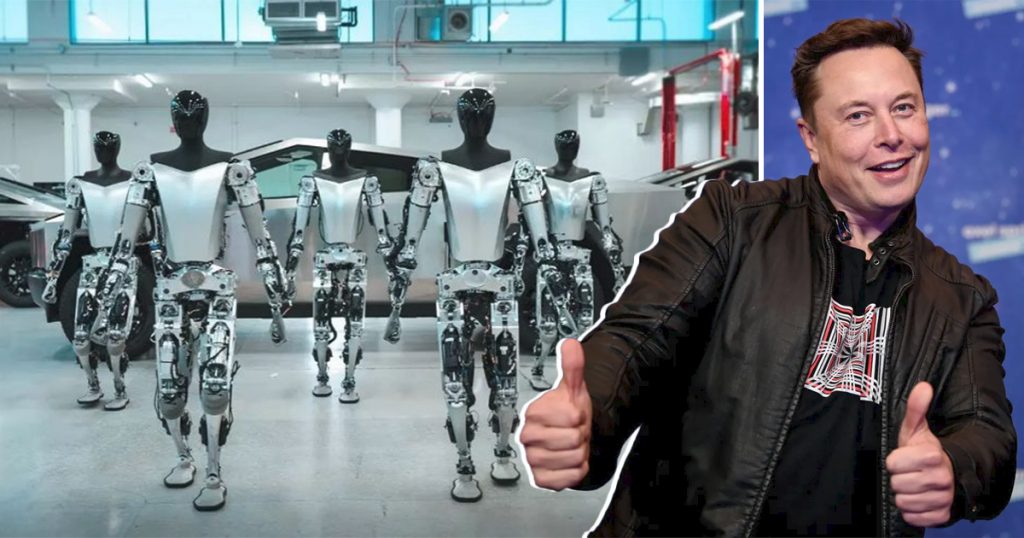In recent times, there has been a noticeable trend among leading automakers, such as Tesla, towards substantial investments in humanoid robots. This article aims to delve into the reasons behind this strategic shift, exploring the underlying motivations and potential implications. By examining the intersection of technology and automotive industries, we can shed light on the significance of these investments and their impact on the future landscape.

Enhancing Automation Capabilities:
One of the primary drivers behind automakers’ increased investment in humanoid robots is the quest for enhanced automation capabilities. Humanoid robots possess the potential to revolutionize various aspects of automotive manufacturing and assembly processes. By leveraging advanced robotics technologies, automakers aim to streamline production lines, improve efficiency, and reduce costs. These robots have the ability to perform intricate tasks with precision and speed, ultimately leading to higher productivity and quality control.
Advancements in Artificial Intelligence (AI):
The advancements in artificial intelligence have played a pivotal role in the growing interest of automakers in humanoid robots. AI-powered robots have the ability to learn, adapt, and perform complex tasks with human-like dexterity. By incorporating AI algorithms and machine learning techniques, humanoid robots can develop sophisticated capabilities, enabling them to navigate dynamic environments, interact with humans, and carry out intricate operations. This convergence of AI and robotics presents unprecedented opportunities for automakers to enhance their manufacturing processes and expand the scope of automation.
Human-Robot Collaboration:
Another crucial aspect driving automakers’ investment in humanoid robots is the concept of human-robot collaboration. Rather than replacing human workers entirely, these robots are designed to work alongside humans, augmenting their capabilities and creating synergistic partnerships. By leveraging the unique strengths of both humans and robots, automakers seek to optimize productivity, ensure workplace safety, and improve overall operational efficiency. Humanoid robots can handle physically demanding or hazardous tasks, freeing up human workers to focus on more complex, creative, and strategic responsibilities.
Future Applications and Mobility Solutions:
Investments in humanoid robots also signify automakers’ long-term vision for future applications and mobility solutions. These robots have the potential to extend beyond the manufacturing realm and play vital roles in various aspects of transportation and mobility. From assisting with vehicle maintenance and repairs to providing personalized in-car experiences for passengers, humanoid robots can redefine the automotive industry’s relationship with technology. Moreover, as autonomous vehicles become more prevalent, humanoid robots may serve as companions, caretakers, or service providers within the vehicles, enhancing the overall customer experience.
Competitive Advantage and Innovation:
The heavy investment by automakers in humanoid robots is driven by a desire to gain a competitive advantage and foster innovation. In a rapidly evolving automotive landscape, staying at the forefront of technological advancements is crucial for sustained success. By embracing humanoid robotics, automakers position themselves as pioneers in integrating cutting-edge technologies into their operations. Furthermore, these investments foster a culture of innovation, attracting top talent and driving research and development in the field.
Conclusion:
The substantial investments made by automakers, including Tesla, in humanoid robots represent a significant shift in the automotive industry’s technological landscape. The drive to enhance automation capabilities, leverage AI advancements, enable human-robot collaboration, explore future applications, and foster innovation are key factors driving these investments. As humanoid robots continue to evolve and mature, their potential to transform automotive manufacturing, operations, and mobility solutions becomes increasingly evident. Automakers’ strategic focus on humanoid robots underscores their commitment to staying at the forefront of technological progress and shaping the future of the automotive industry.
